Earlier this month, Evan Childress, the park’s Supervisory Fish Biologist, organized and trained staff, interns, and volunteers to sample nearly one hundred streams across Shenandoah, using environmental DNA (eDNA) technology to filter water samples for traces of brook trout genetic material.
These volunteers followed exact GPS coordinates to selected streams and followed a precise procedure of collected water samples, kept their samples cool, and returned them to testing sites, where park staff used a filtration pump to separate the sediment and eDNA from the water. Each filter was individually sealed and labeled, and they will be sent to a lab for processing this summer to indicate the presence or absence of brook trout in every tested stream.
“These data will help us to understand the places that are still good for trout and the places that are not,” said Childress. “The thing about not being able to work everywhere is choosing where not to work. I think that many of these places will actually be chosen as places not to work, but it will help us to prioritize our efforts where we can be most effective.”
The data collected will help the park decide how best to protect these iconic cold-water fish in Shenandoah, giving park management the opportunity to take early action in finding new ways to meet the needs of brook trout in our changing climate.
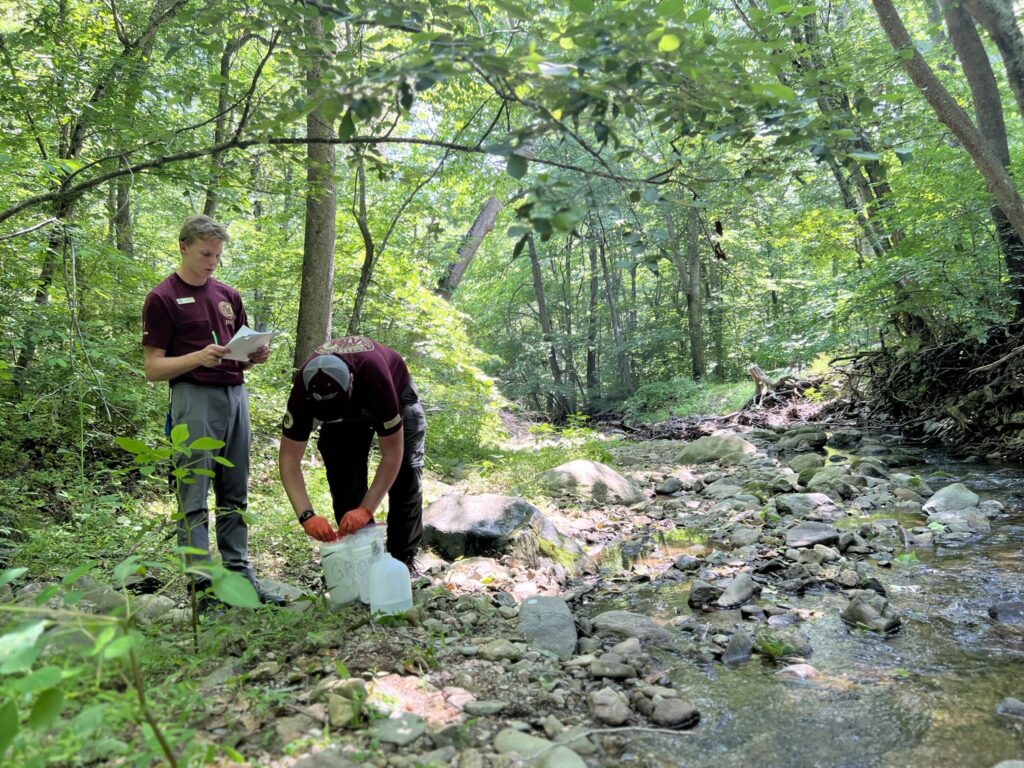
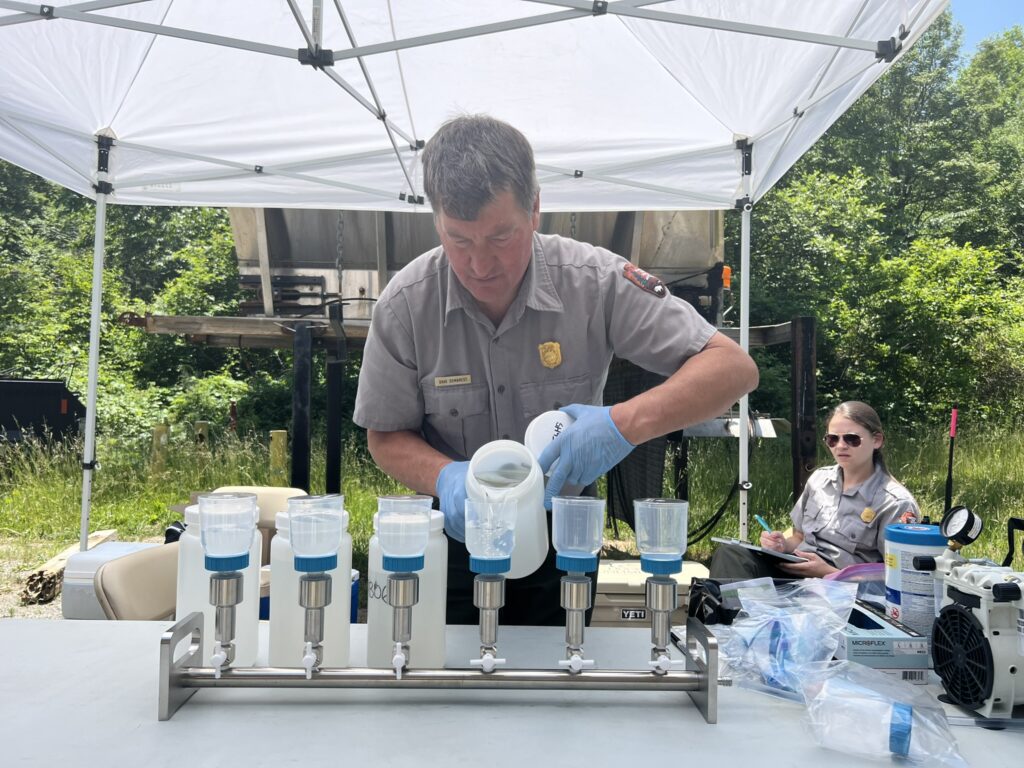
Brook trout aren’t the only species reacting to a changing climate in Virginia. Almost exactly one month before the trout survey, Artist-in-Residence Sonya Lara challenged visitors to think deeply about the scientific and social labeling of both birds and people, presenting research on the evolution of finches’ beaks and birdcalls.
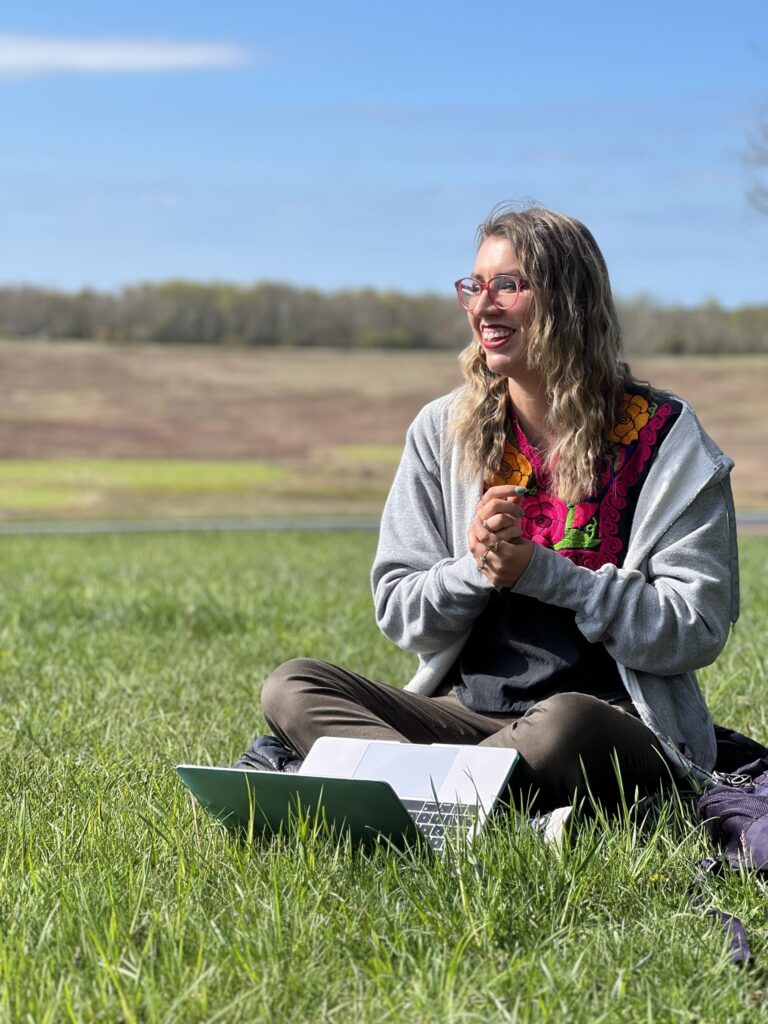
She asked her audience to reflect on sound in their daily lives, where birdsong wove its way in and out of that soundscape. Then she shifted focus to Shenandoah, but kept the scope small, asking the group to focus on a singular place in the park and draw the shape of sound in that place. Some visitors drew wind swirling through leaves or whipping across peaks, while others sketched the rushing of waterfalls, the gurgling of streams, the inconsistent whooshing of vehicles along the Drive, or the swell and lull of conversation in lodges and dining halls.
No matter what they drew, every sound contained movement, even the loud static of waterfalls containing thousands of new water droplets each second. Every sound reflected the constancy of change in Shenandoah.
Sonya asked the group to think critically about that change and how we talk about it, using the specific example of finches “misimprinting”: changing their birdsong, confusing ornithologists and avid birdwatchers. One visitor ruminated on the term “misimprinting,” saying that perhaps labeling the phenomenon as such was more a reflection of the wounded pride of a person who misidentified a finch than it was a reflection of the finch’s altered call. He suggested reframing the concept as a positive adaptation, rather than a mistake on the bird’s part.
Sonya herself reflected on time and change in the park, saying, “I think it’s kind of magical that the park will be fossilized in some of my poetry and creative nonfiction. Regardless of how the park evolves and changes years down the line, it’ll always be cemented in that one way that I was able to experience it.”
In the face of this constant change, both artists and scientists capture moments in time – some through lyrical writing, photography, music, and painting; others through timestamped data.
Scientists are helping the park understand how Shenandoah is changing and what the future might look like based on data; artists are helping visitors understand the impact of those changes on the future and reframing how they think about it.
Sometimes we expect the places we love to stay the way they were when we fell in love with them. We want our favorite trail to feel the same way so we can share it with loved ones. We want the same flowers to bloom in the same places so we can find them. We want the views to inspire the same awe.
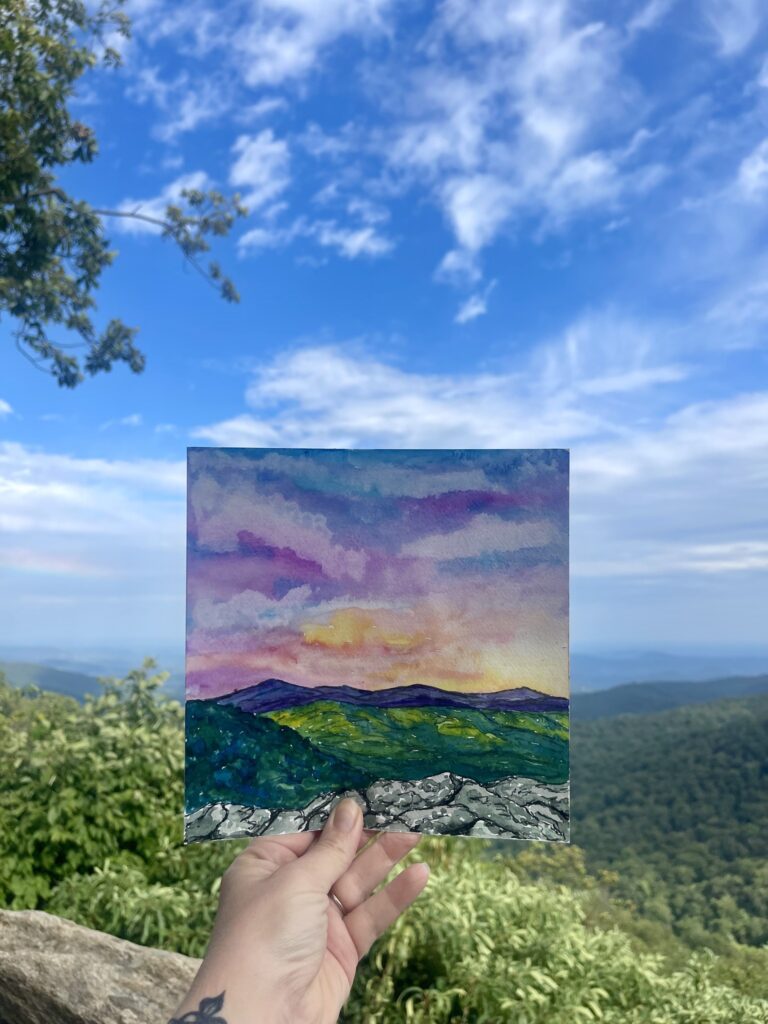
But we don’t protect public lands to make sure the next generation has the same experiences that we do; we protect public lands so the next generation can have their own experiences – discover their own inspiration and awe and fall in love with the place themselves.
Preservation doesn’t mean putting the land and all of its resources into a jar and sealing it forever; preservation means protecting the quality of the entire ecosystem by giving it space to thrive and adapt naturally to meet its own needs, and occasionally giving it a boost in the effort.
Shenandoah is a land alive – and it changes year by year, season by season, moment by moment. It adapts to new species, temperatures, and human influence. It recovers from natural disasters like acid rain and severe storms.
We work to help the park adapt and recover.
We purchase land along the boundary lines to protect habitats from encroaching development. We preserve the tree canopy to keep temperatures cool. We monitor air quality and wildlife populations to help park staff make informed management decisions. We educate thousands of students about the importance of natural resources every year. We bring in artists to help the public understand and develop relationships with public lands.
We work towards positive change.
We work to preserve and enhance Shenandoah for the enjoyment of current and future generations.
And we’re so thankful for your support.
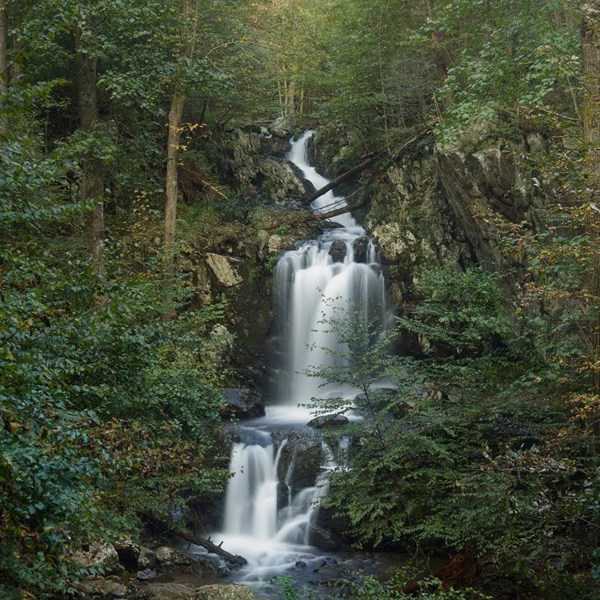
A special thank you to Bass Pro Shop and Cabela’s Outdoor Fund for supporting the brook trout conservation project.


